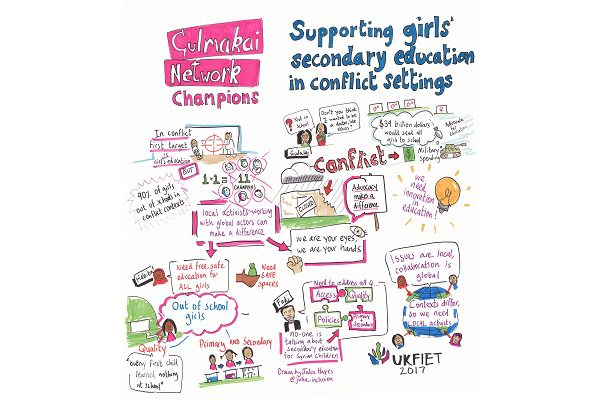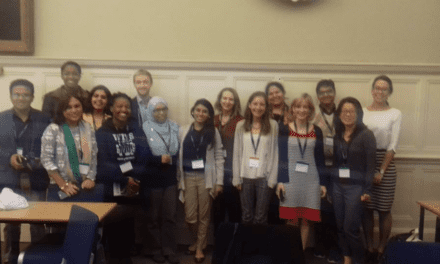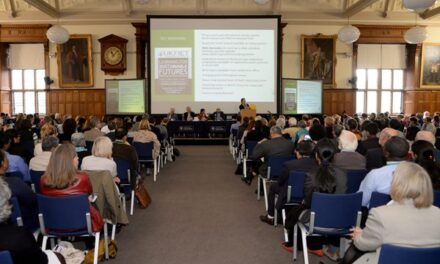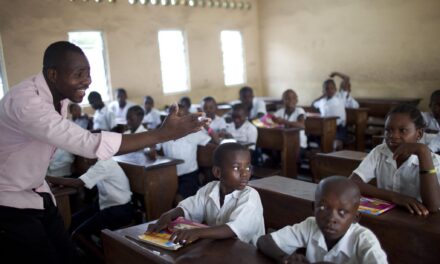Inclusive education: disability, textbooks and gender
Part 2 of the Summary of thematic strand from UKFIET conference, September 2017
Thematic convenors: Susy Ndaruhutse, Education Development Trust and Amy Parker, Relief International
In Part 1 of this series of three blogs, we looked at more general highlights from our Inclusive Education conference sub-theme. Key points around equity at both the school level and beyond education were discussed, as was the challenge around the policy versus implementation reality.
In this second instalment, we have collected highlights on disability, textbooks and gender – read on…
Disability and special educational needs
Challenging deficit views on disability: In Pakistan and India, parents of children with disabilities ARE investing in the education of their children and are keen for them to go to school. This supports mounting qualitative evidence which challenges the deficit view that children are hidden away or families are ashamed (Session 2G, REAL Centre at the University of Cambridge).
Identifying vs labelling of special needs children: We should ask teachers which children they find hard to teach and why (this could include special needs children as well as non-special needs children). Often there is a focus on the disability, rather than exploring the learning needs of a child (Session 3J, audience discussion).
Measuring disability more holistically: The low prevalence rates of disability in different countries are due to the manner in which questions are asked. The Washington Group on Disability questions give a much better reflection of reality as they look at the functional limitations resulting from the interaction between a person’s impairment and their environment, so they go beyond more visible physical disabilities (Sessions 2G, REAL Centre at the University of Cambridge and Session 2K, Mark Waltham, UNICEF).
Equipping teachers to support learners with disabilities: Teachers are often under-equipped to effectively support learners with disabilities. In Kenya, the Inclusive Education policy is not being implemented within schools as teachers lack skills and knowledge to teach special needs and non-special needs children together, and 25% of teachers misunderstand what inclusive education is (Session 3J, Francis Likoye Malenya, Kenyatta University).
Textbooks
Reforming textbooks is necessary but not sufficient for inclusion: Textbooks should transform not reflect the status quo, however textbook reform alone is not enough. In many of these societies, whilst their textbooks may reflect progression, domestic violence, access to the labour market and other multiple barriers continue to block women from genuine participation in society (Session 5G, Niaz Asadullah, University of Malaya).
Gender, girls’ education, school-related gender-based violence (SRGBV)
Recognising our own hidden or internalised social norms: Planners and gender experts need to probe on what the root causes of gender inequality are in each context, even amongst women themselves, as they often internalise gender social norms (Session 8J, Nora Fyles, UNGEI).
Transformational view on gender equality: Gender equality is not limited to how many girls are enrolled but what boys and girls can do with their education, to be more responsive to gender issues and becoming transformative agents for society (Session 7H, discussant).
Girls’ Education Challenge theory of change: Education marginalisation is dynamic and a continuum, it somehow involves some temporal groups. GEC’s education marginalisation analysis tool uses an intersectionality lens to map the barriers to education. It is aimed to see the level of marginalisation and potential capabilities that girls can get from education (e.g. literacy, numeracy, personal agency, social mobility and network). A key challenge in classifying the needs of marginalised children is the tension between the principle of inclusion and cost-effectiveness (Session 7H, Rachel Booth and Jessica Mony, Social Development Direct).
A more nuanced view on child marriage and education: Marriage in schooling age does not always mean girls becoming victims (forced marriage); it can be a powerful negotiation with the barriers if it occurs from girls’ choice/agency/voice. Preventing early marriage is not the only solution for this dilemma (Session 7H, Louise Wetheridge, UCL-IoE).
Gender and SRGBV: equity still tends to mean parity between boys and girls. The issue of violence is beginning to seep into plans but only in small ways (Session 7D, Jenny Parkes, UCL-IoE).
Return next week to read the third and final part of this blog series, which will focus on EdTech, learning assessments and refugees and displacement.
Inclusive education for sustainable development – Part 1
Inclusive education: EdTech, learning assessment and refugees and displaced populations – part 3





